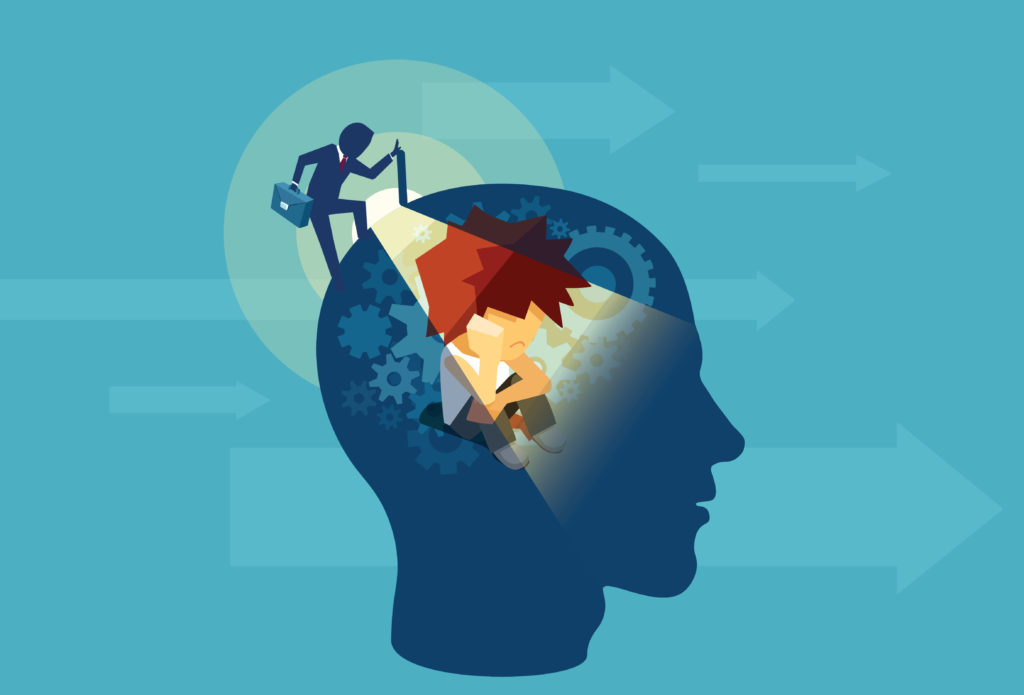Your Brain on Trauma: How Your Body Is Secretly Fighting Battles You Thought Were Over
Trauma rewires your brain's survival circuits, keeping your body in danger mode long after threats end. Unlike stress, trauma persists physically, devastating health until proper treatment recalibrate
I once had a patient who worked as a correctional law enforcement officer in Ontario—let's call him Marcus—who would physically jump at the sound of a door slamming. His body would tense, heart racing, pupils dilating, all while his prefrontal cortex was desperately trying to remind him that he was sitting in my office. Marcus was demonstrating, with painful clarity, what Bessel van der Kolk so eloquently describes as "the body keeping the score."
Trauma Is Not Just "Bad Stress"
Let's be clear about something fundamental: trauma is not simply a bad day at the office or an unpleasant conversation with your mother-in-law. As van der Kolk articulates, "Life sucks a good amount of the time." We all endure stressful situations—they're unpleasant, they activate our sympathetic nervous systems, they spike our cortisol, and then they end.
Trauma, by contrast, is what happens when your nervous system refuses to acknowledge that the danger has passed. The threat is gone, but your amygdala hasn't gotten the memo. Your hippocampus—that seahorse-shaped structure critical for contextualizing memories—has essentially gone offline. Your body continues to mobilize as if the threat is omnipresent, constantly flushing your system with stress hormones that were only ever meant for short-term deployment.
The "Cockroach Brain" Takes Control
When trauma hijacks your nervous system, what van der Kolk calls the "cockroach brain"—those ancient, evolutionarily primitive structures concerned solely with survival—remains perpetually activated. These structures don't understand calendars or geography; they don't comprehend that the war ended, that the abuser is in prison, that the accident happened twenty years ago. They only understand threat and safety, and when traumatized, they're stuck in a loop of perceiving threat everywhere.
This is neurobiology at its most raw. Your rational neocortex—that magnificent structure that separates humans from other mammals—gets overwhelmed by these primitive survival circuits. The prefrontal cortex, which normally regulates emotions and inhibits inappropriate responses, loses its regulatory control. The result? You're not responding to the present; you're responding to neural patterns established during trauma.
Trauma Lives in the Body, Not Just the Mind
Perhaps most fascinating is how trauma manifests physiologically. It's not just psychological; it's biological through and through. Traumatized individuals show profound alterations in immune function, hypothalamic-pituitary-adrenal axis regulation, and inflammatory markers. Their bodies are quite literally keeping score of past threats, maintaining a physiological state of hypervigilance that, over time, exacts a devastating toll on physical health.
This is why traumatized people often struggle with autoimmune disorders, cardiovascular disease, and chronic pain conditions at rates far exceeding the general population. The same stress hormones that were meant to save your life in acute danger become pathological when chronically elevated. Cortisol, norepinephrine, adrenaline—these are magnificent molecules for escaping predators but terrible companions for decades of everyday life.
The Social Context of Trauma
Despite our American obsession with rugged individualism, humans are fundamentally social creatures. Our nervous systems co-regulate with others from infancy. This is why, as van der Kolk points out, social support at the time of trauma can be profoundly protective. A dog bite becomes a temporary scare rather than a life-altering trauma when loving parents immediately provide safety, comfort, and context.
Conversely, this explains why childhood trauma is particularly devastating. When the people who should be sources of safety become sources of danger, or when they fail to provide regulation during threatening experiences, the developing nervous system learns that the world is fundamentally unsafe. These neural patterns become deeply embedded before the brain has fully developed its regulatory capacities.
A Societal Failure to Address Trauma
The prevalence of trauma is staggering—far from being "outside normal human experience" as early PTSD definitions suggested. One in eight American children witnesses domestic violence. Sexual assault, physical abuse, neglect, and community violence are devastatingly common.
More progressive societies recognize that addressing trauma requires robust social supports—universal healthcare, universal childcare, reduced income inequality, and community solidarity. These aren't luxuries; they're necessary infrastructures for preventing and healing trauma at a societal level.
The Therapeutic Path Forward
In my three decades as a psychotherapist, I've seen how trauma treatment has evolved from solely focusing on cognitive narratives to incorporating somatic approaches that address the body's stored responses. We now understand that healing requires not just talking about trauma but physically releasing its grip on our autonomic nervous systems, recalibrating dysregulated stress response systems, and rebuilding a sense of safety in relationship with others.
Effective trauma therapy operates at the intersection of biology and psychology. Approaches like EMDR, Somatic Experiencing, and neurofeedback target the dysregulated nervous system directly, bypassing the neocortex's rationalizations to access those primitive survival circuits. Even evidence-based psychotherapies like Prolonged Exposure and Cognitive Processing Therapy work not just by changing thoughts but by allowing the amygdala to experience feared stimuli in safe contexts, gradually extinguishing maladaptive fear responses. The therapeutic relationship itself provides a platform for nervous system co-regulation—something traumatized individuals often missed during development or lost during traumatic experiences.
I also found that Yoga proved more effective than psychiatric drugs for PTSD by teaching breath control, body awareness, and fostering a relationship with one's internal sensory system.
Trauma may transform the brain and body, but new experiences can facilitate neuroplasticity, gradually shifting those primitive survival circuits toward regulation. The body keeps the score, yes—but with appropriate intervention, it can also learn new, more adaptive patterns of response. Our neurobiology of trauma can become our neurobiology of healing.


